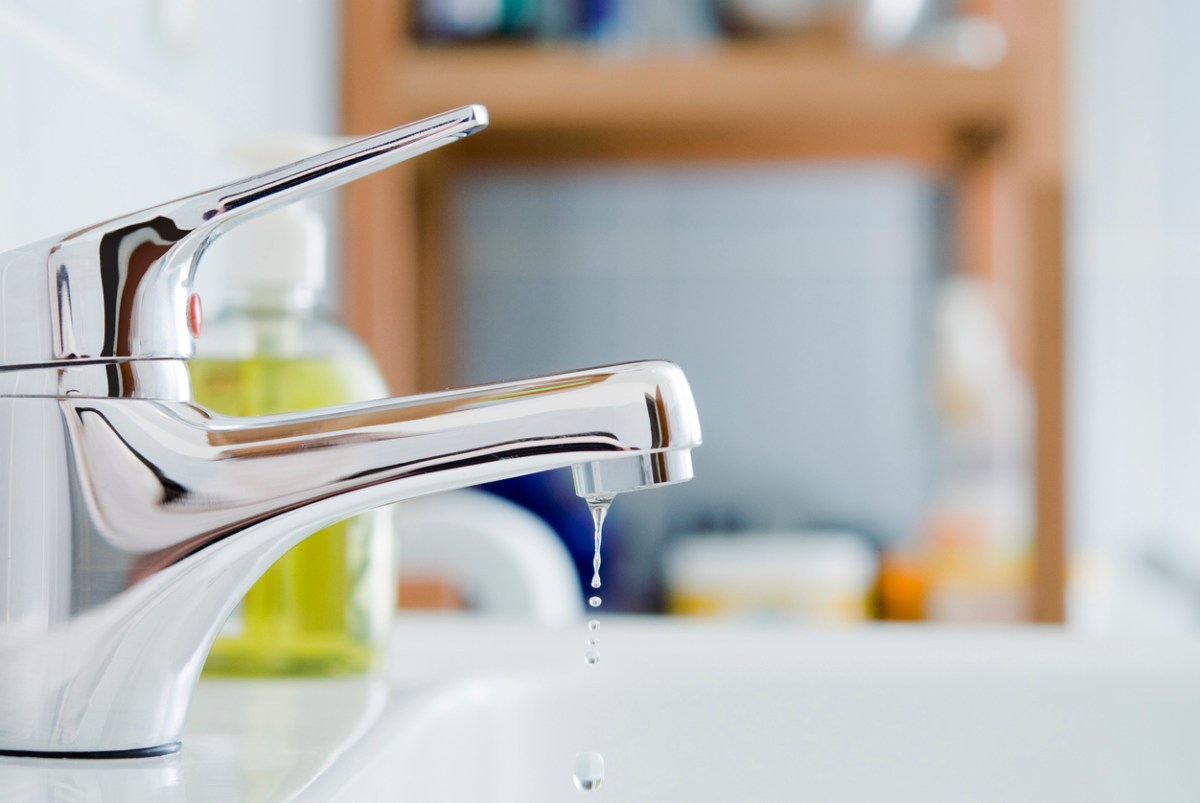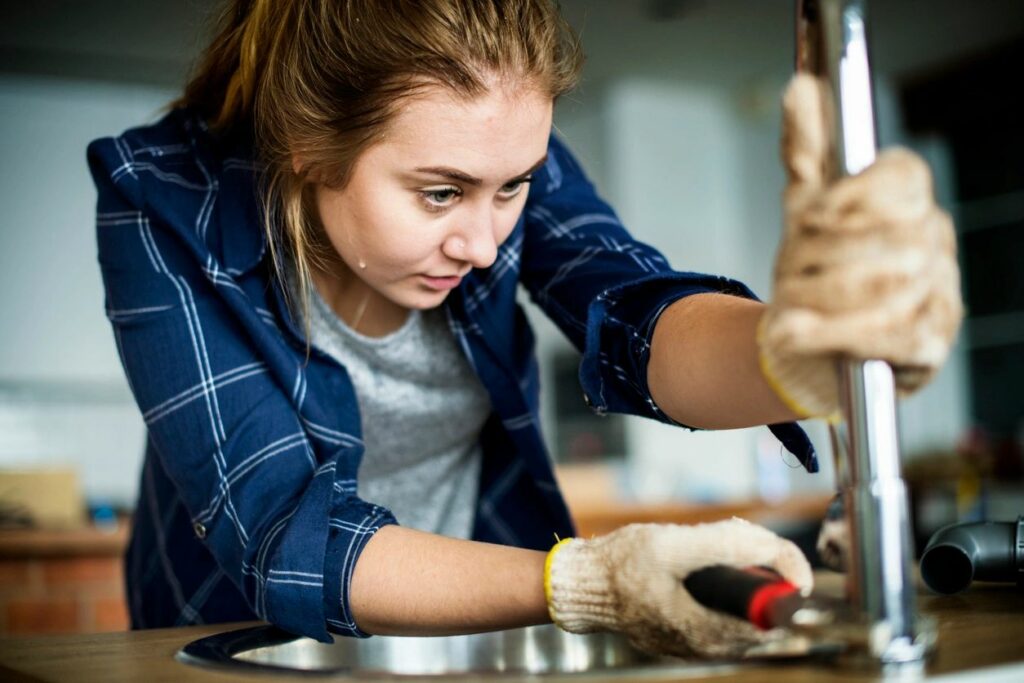My Merits of Resolving a Leaking Faucet
My Merits of Resolving a Leaking Faucet
Blog Article
They are making a few good points related to Water Dripping from Faucet: Why and How to Fix as a whole in the content in the next paragraphs.

Leaking taps might look like a minor aggravation, however their effect surpasses just the nuisance of the noise. From drainage to sustaining unnecessary monetary costs and wellness risks, disregarding a trickling faucet can bring about numerous repercussions. In this post, we'll explore why it's important to address this usual house issue quickly and efficiently.
Wastefulness of Water
Environmental Influence
Trickling faucets contribute considerably to water waste. According to the Environmental Protection Agency (EPA), a single tap trickling at one drip per second can lose more than 3,000 gallons of water per year. This not just strains water sources however also influences ecological communities and wild animals based on them.
Financial Prices
Boosted Water Bills
Beyond the environmental influence, leaking taps can inflate water costs significantly. The accumulated waste over time equates into greater energy expenses, which might have been stayed clear of with prompt repair work.
Prospective Home Damages
In addition, prolonged leaking can cause damage to components and surfaces surrounding the faucet. Water accumulation can trigger staining, rust, and also architectural problems if left ignored, causing additional repair work expenses.
Wellness Worries
Mold And Mildew and Mildew Growth
The consistent presence of moisture from a leaking faucet produces a perfect atmosphere for mold and mold development. These fungi not only endanger indoor air quality yet likewise pose wellness risks, particularly for individuals with respiratory conditions or allergic reactions.
Waterborne Diseases
Stagnant water in trickling faucets can end up being a breeding ground for germs and various other pathogens, enhancing the danger of waterborne conditions. Pollutants such as Legionella microorganisms thrive in stagnant water, potentially causing severe ailments when consumed or inhaled.
DIY vs. Professional Repair service
Pros and Cons of DIY Repair
While some may attempt to fix a dripping faucet themselves, do it yourself repair services come with their own collection of obstacles. Without correct understanding and tools, do it yourself attempts can exacerbate the concern or bring about incomplete repair work, lengthening the issue.
Benefits of Hiring a Specialist Plumber
Employing a professional plumber ensures that the underlying cause of the dripping faucet is attended to efficiently. Plumbings have the competence and equipment to identify and fix faucet concerns efficiently, conserving time and reducing the danger of more damage.
Step-by-Step Guide to Dealing With a Dripping Faucet
Devices Needed
Prior to attempting to deal with a dripping faucet, collect the required devices, consisting of a flexible wrench, screwdrivers, replacement parts (such as washing machines or cartridges), and plumber's tape.
Common Tap Issues and Their Solutions
Recognize the sort of tap and the certain problem triggering the drip. Common issues include damaged washing machines, corroded shutoff seats, or damaged O-rings. Describe producer instructions or on the internet tutorials for step-by-step advice on repair services.
Preventive Measures
Normal Maintenance Tips
To prevent dripping taps, carry out routine maintenance such as cleaning up aerators, evaluating for leaks, and replacing damaged components immediately. Additionally, consider installing water-saving devices or updating to more effective components.
Significance of Prompt Fixes
Dealing with dripping taps as quickly as they're discovered protects against more water wastefulness and possible damage, ultimately saving both water and money in the long run.
Impact on Home Value
Understanding of Well-Maintained Home
Preserving a residential or commercial property in good condition, consisting of resolving maintenance issues like dripping taps, boosts its regarded value and desirability among possible buyers or lessees.
Impact on Resale Worth
Qualities with well-kept plumbing components, including faucets, command greater resale values in the realty market. Dealing with trickling taps can add to a positive impact throughout property examinations and settlements.
Ecological Duty
Private Payment to Preservation
Taking obligation for dealing with trickling taps lines up with more comprehensive efforts toward water conservation and environmental sustainability. Every person's actions jointly make a substantial influence on protecting precious resources.
Sustainable Living Practices
By focusing on punctual repair services and taking on water-saving routines, individuals add to lasting living techniques that benefit both existing and future generations.
Final thought
Dealing with a trickling faucet goes beyond mere convenience; it's a vital step toward conserving water, lowering monetary costs, and safeguarding wellness and residential property. Whether through do it yourself repair work or specialist help, acting to fix trickling taps is a little yet impactful way to promote liable stewardship of sources and contribute to a healthier, much more sustainable future.
Most Common Reasons for a Leaky Faucet and How to Stop the Drip
Whether it’s your kitchen faucet leaking or a bathroom faucet leaking, one leaky faucet can waste anywhere from three to 30 gallons of water every single day. If the constant drip-drip-drip doesn’t get your attention, your water bill will. The good news is that, by following a few simple steps, chances are pretty good you can fix the problem yourself.
Why is it dripping?
Before you start taking things apart, let’s break down some of the most common causes of a leaky faucet.
Bad O-ring.
A cartridge is a valve that controls the flow of water into the faucet spout. On cartridge faucets there’s an O-ring—the little disc attached to the stem screw that holds the faucet handle in place. If it’s loose or worn-out, it can cause your sink handle to leak. Of course, the cartridge itself could be worn out. If that’s the case, make sure you replace it with the exact same kind.
Corroded valve seat.
The valve seat connects the faucet and the spout. If the leak seems to be coming from the spout, it might be because a buildup of water sediment has corroded the valve seat.
Worn-out washers or seals.
A leaky spout could be caused by a bad washer that rests against the valve seat. It’s just a matter of time before friction takes its toll. It could also be the wrong size washer or one that’s been installed incorrectly. Water sediments can also corrode inlet and outlet seals.
Water pressure.
If the faucet only drips now and then, or when you turn the handles a certain way, you should probably check your home’s water pressure.
Loose or broken parts.
The adjusting ring and packing nuts in the stream screw can become loose over time, causing your sink handle to leak. Try tightening or replacing the packing nut. If the leak is coming from the pipes underneath the sink, you probably have a broken pipe or fitting. If that’s the case, you should definitely call a plumber.
Know your faucet.
Faucets come in a variety of types. Each one has its own assembly—and its own possible causes of leaks. Learning about the four most common kinds of faucets will help you know how to take them apart and make any repairs.
How to stop a leaky faucet
Fixing that leaky faucet doesn’t have to take a lot of time, money, or expertise. It’s usually a simple matter of replacing a worn-out washer or gasket, a loose O ring, or another part. Chances are really good you can do this yourself if you follow these simple steps.
Shut off the water.
Before you tackle the faucet, cut off the water supply to the sink. There should be one valve for hot and one for cold. Hand-turn them clockwise with your hands till they close. If there are no valves under the sink, head to the basement and shut off the main water supply to the house. Then turn on the faucet until it empties out the water that’s still in the line and you’re ready to start. It’s a good idea to cover the sink drain with a plug or a rag so you don’t lose any small pieces and parts while you’re working.

I'm very taken with Should I Repair or Replace a Leaky Faucet? and I hope you enjoyed the entire blog post. Enjoyed reading our write-up? Please quickly share it. Let other people find it. Many thanks for your time spent reading it.
Report this page